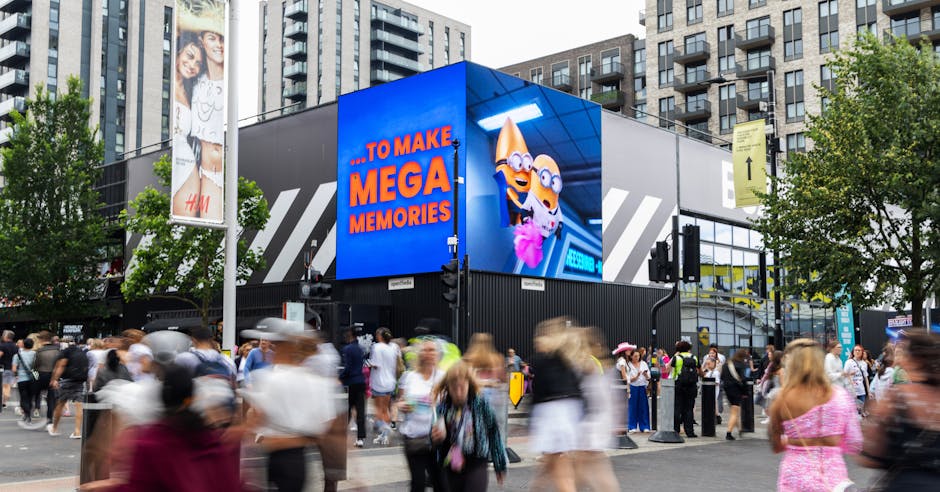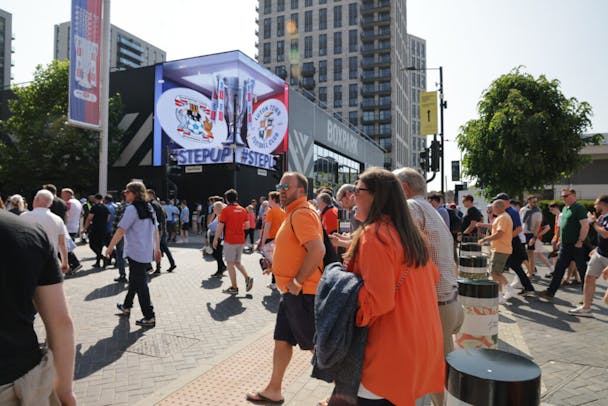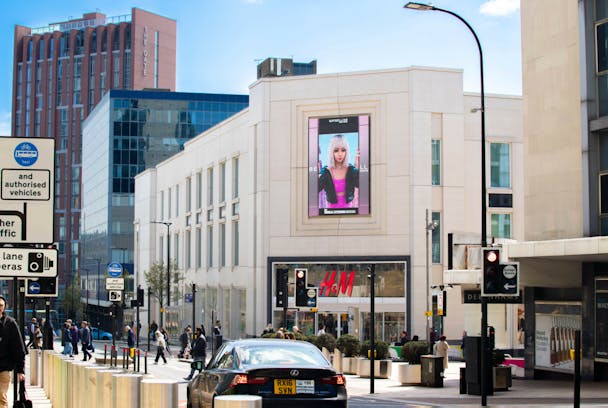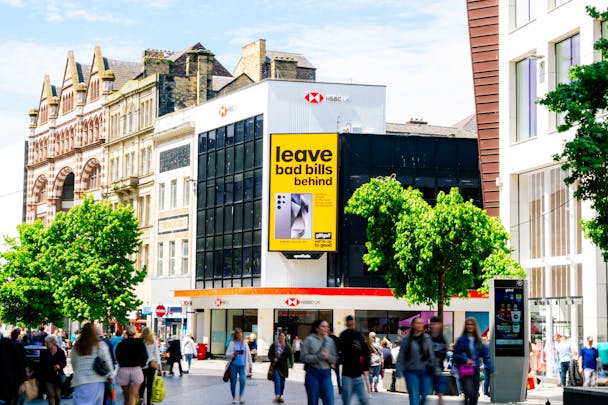5 reasons why OOH advertising is ready for a huge 2025
It is estimated an eye-watering £40bn has been spent globally on OOH advertising in 2024. As OOH spend rises steadily year-on-year, technological advancements are creating exciting new opportunities for brands. Here, Open Media looks at five reasons why 2025 will be huge for advertisers, brands and OOH.

OOH Cuts Through
No single media channel reaches over 90% of adults every week other than OOH according to a TouchPoint report by IPA. With OOH able to influence a staggering number of consumers – Open Connect by Open Media reaches over 30 million people each month – advertisers and brands can use OOH to ensure their campaign has maximum impact. With increased personalization available for hyper-specific target audiences, as well as AI-powered location intelligence, OOH opportunities are limitless moving into 2025. Over the last 12 months, Open Media has worked with major brands such as SkyBet to bring stunning campaigns to life in iconic locations such as Wembley Boxpark. With the ability to command attention becoming increasingly varied and creative, OOH continues to cut through the noise and dominate engagement.

Online Influencer
While OOH is traditionally recognized for its effectiveness in driving footfall and in-store sales, mobile phones have changed the way we shop forever. With the ability to order almost anything in the palm of your hand, online shopping has become the purchase method of choice for many consumers. And, according to a recent Mobile Pound report, £179bn is spent each year while shoppers are out-and-about, accounting for 60% of online spending. The data suggests OOH delivers an online sales multiplier of 1.7, meaning for every £3 spent in-store as a result of exposure to OOH, £2 is also spent online. While in-store spending still dominates, OOH has a tangible ability to influence both offline and online environments. Furthermore, for every £5 spent either in-store or online, OOH influences a further £4.20 spend on average.
3D Future
3D advertising is no longer emerging. It is here and now. Over the last 12 months, Open Media has worked on several mind-bending campaigns, including the Lexus LBX vehicle launch, which featured a Lexus appearing to drive out of the screen into the real world. This followed other creative uses for the OOH space: Subway launched its world-first interactive billboard in which sub-lovers were able to create their sandwich in real-time before collecting at a nearby store. Other major brands, including Paramount, Maybelline, KFC and Magnum also combined 3D and OOH to major acclaim. The future of OOH is increasingly dynamic, leveraging advanced technologies such as augmented reality, real-time personalization and responsive content. In 2025, OOH will adapt messaging based on audience, time, location and other demographics while integrating with mobile devices to offer customized experiences for consumers, from virtual fittings to real-time updates. OOH continues to push boundaries and become more interactive than ever.

Gen See
RetailNext research suggests there is a post-pandemic resurgence of young people, specifically Gen Z (born between 1997-2012), returning to the high street to experience real-life shopping. 46% of millennials make weekly in-person shopping trips – six more percentage points compared with the average shopper – and are the most frequent in-store shoppers for fashion. This offers brands a unique opportunity to connect with Gen Z through OOH advertising, utilizing technological advancements such as 3D and interactive campaigns. Gen Z are seeking a more authentic shopping experience and OOH can captivate fresh attention at its most engaged.

Sustainability Success
According to the latest research, OOH is the most sustainable form of advertising per impression. It amounts to just 3.3% of advertising power consumption and less than 3.5% of advertising carbon footprint. Research from Outsmart, the trade body for the OOH industry, shows that the medium appeals as a sustainable advertising platform as it maximizes the recycling rate of materials, uses energy-efficient lighting, optimizes screen times and appoints suppliers based on their environmental credentials.
Sustainability initiatives include maximizing the recycling rate of materials, converting to more energy-efficient lighting, optimizing logistics routes, and, most importantly, appointing suppliers based on their environmental credentials. Advertisers also have the option to turn off their screens overnight to save energy. In 2024, Open Media included mandatory Carbon Literacy training for all staff members. To date, they have avoided over 354 tonnes of carbon, planted 8,699 trees and supported 24 environmental projects globally, ranging from wind power projects to rainforest protection through our partnership with Ecologi.
